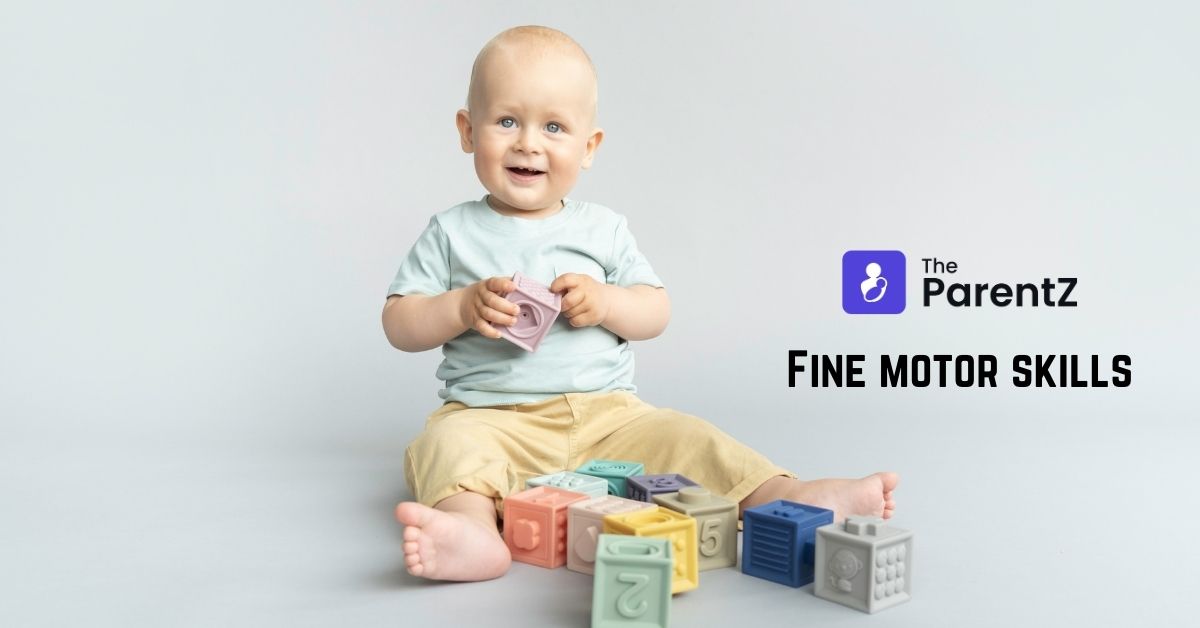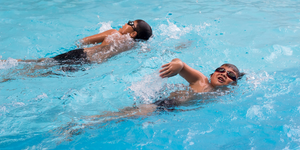Can you imagine how life would be if we were unable to control and move our fingers or our toes? Development of fine motor control is what allows us to perform minute activities such as picking up objects or tying our shoelaces. Small fine movements which make our lives easier are a result of our fine motor skills which develop over years starting at birth itself.
What are fine motor skills?
Fine motor skills involve small precise movements we do which involve the smaller muscles of the body such as hands, fingers, wrist, toes and ankles. They also include eye movements which help in visual acuity and coordination. Facial expressions which involve the small muscles of the face may also be included in fine motor movements.
What does fine motor skills require?
Fine motor skills require control and coordination between various small muscle groups of the body. Execution of fine motor activities also include proper coordination and planning, muscle strength and intact peripheral sensations along with dexterity.
Why are fine motor skills important?
Fine motor skills are very important for various day to day activities. They are also important for development of dexterity and skill in movements which contribute to speed.
Fine motor skills involved in dayto day activities include:
- Holding pencil
- Scribbling using pencil
- Writing and drawing
- Use of scissors
- Using a keyboard for typing
- Using electronic devices such as mobile phones and tablets with small controls
- Folding of clothes
- Using cutlery such as fork, spoon and knife
- Tying of shoelaces
- Buttoning up clothes
- Using a needle and thread to sew
- Closing a zipper
- Twisting a doorknob
- Playing with legos
- Playing musical instruments such as a piano or a guitar
- Using a toothbrush
- Combing of hair
- Playing with puzzles
- Construction using lego pieces
What fine motor skills to expect at what age?
Fine motor skills start developing from birth itself. These skills continue developing over a course of several years. There is a timeframe documented by healthcare professionals for the development of fine motor skills in relation to the age of the child.
0-3 months
- Palmar grasp reflex is present – fist of the baby remains tightly closed
- Baby gradually starts opening palms as it approaches the age of 3 months
3 – 6 months
- Baby develops bidextrous grasp – baby uses both hands to grab onto objects
- Baby hold hands together
- Baby tries to hold toys like rattles
- The eyes of baby follow objects and toys when moved
6 – 9 months
- Baby develops unidextrous grasp – baby uses one hand to grab onto objects
- The grasp of the baby is immature at 6 months; baby favours the palm and little finger while grabbing onto objects. Objects are not held onto properly and slip from grasp.
- The grasp of the baby matures at 9 moths; baby uses the thumb and index finger along with the palm while grabbing onto objects. Baby can grab objects properly.
- Baby bangs two toys together
- Baby starts to pick up small food such as chips and biscuits.
9 – 12 months
- Baby develops an immature pincer grasp. Baby tries to use thumb and index finger to hold objects such as a pen or spoon.
- Baby can hold objects and release them at will
- Baby hands over toys and objects to others when asked
- Baby can use 2 blocks and stack them together
- Baby tries to turn pages of a book with a couple of pages together
12 – 18 months
- Baby develops a mature pincer grasp. Baby uses thumb and index finger to hold objects such as a pen or spoon and can hold them properly.
- Baby is able to scribble using a pen or chalk.
- Baby claps hands together
- Baby can separately point the index finger with other fingers closed in a fist
- Baby can use a spoon and a cup
- Baby starts scribbling with pens and crayons
18 – 24 months
- The child now able to draw a horizontal line on paper ( _ )
- The child now able to draw a vertical line on paper ( l )
- Child can make a tower using 3 blocks
- Child can turn pages of a book, one page at a time
3 year / 36 months
- The child now able to draw a circle on paper ( O )
4 year
- The child now able to draw a plus on paper ( + )
4.5 year
- The child now able to draw a square on paper
5 year
- The child now able to draw a triangle on paper ( ∆ )
6 year
- The child now able to draw a diamond on paper
Summing up
Fine motor skills develop throughout the age and may continue developing well into adulthood. The above mentioned skills are those which develop until 6 years of age and a delay in their development may be an indication of some disorder which might need evaluation. While the development of these skills is a natural process, parents can help aid in their development by providing a stimulating and encouraging environment for the child.






